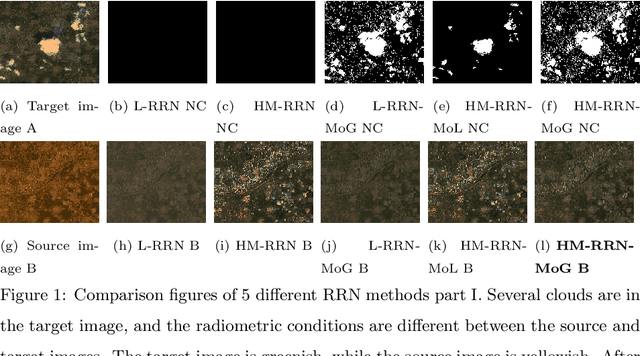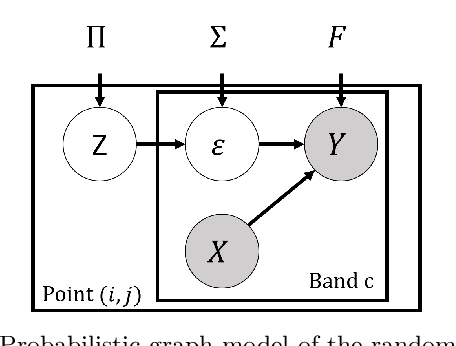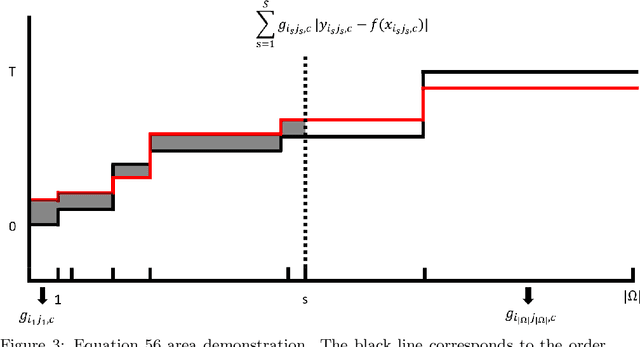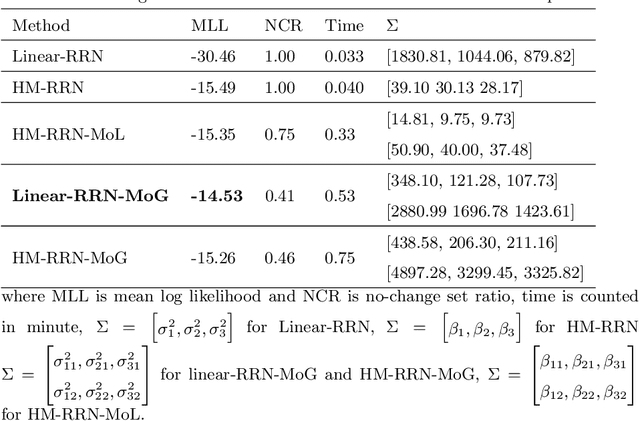Yuze Tian
Auto robust relative radiometric normalization via latent change noise modelling
Nov 24, 2021



Abstract:Relative radiometric normalization(RRN) of different satellite images of the same terrain is necessary for change detection, object classification/segmentation, and map-making tasks. However, traditional RRN models are not robust, disturbing by object change, and RRN models precisely considering object change can not robustly obtain the no-change set. This paper proposes auto robust relative radiometric normalization methods via latent change noise modeling. They utilize the prior knowledge that no change points possess small-scale noise under relative radiometric normalization and that change points possess large-scale radiometric noise after radiometric normalization, combining the stochastic expectation maximization method to quickly and robustly extract the no-change set to learn the relative radiometric normalization mapping functions. This makes our model theoretically grounded regarding the probabilistic theory and mathematics deduction. Specifically, when we select histogram matching as the relative radiometric normalization learning scheme integrating with the mixture of Gaussian noise(HM-RRN-MoG), the HM-RRN-MoG model achieves the best performance. Our model possesses the ability to robustly against clouds/fogs/changes. Our method naturally generates a robust evaluation indicator for RRN that is the no-change set root mean square error. We apply the HM-RRN-MoG model to the latter vegetation/water change detection task, which reduces the radiometric contrast and NDVI/NDWI differences on the no-change set, generates consistent and comparable results. We utilize the no-change set into the building change detection task, efficiently reducing the pseudo-change and boosting the precision.
Automatically eliminating seam lines with Poisson editing in complex relative radiometric normalization mosaicking scenarios
Jun 14, 2021Abstract:Relative radiometric normalization (RRN) mosaicking among multiple remote sensing images is crucial for the downstream tasks, including map-making, image recognition, semantic segmentation, and change detection. However, there are often seam lines on the mosaic boundary and radiometric contrast left, especially in complex scenarios, making the appearance of mosaic images unsightly and reducing the accuracy of the latter classification/recognition algorithms. This paper renders a novel automatical approach to eliminate seam lines in complex RRN mosaicking scenarios. It utilizes the histogram matching on the overlap area to alleviate radiometric contrast, Poisson editing to remove the seam lines, and merging procedure to determine the normalization transfer order. Our method can handle the mosaicking seam lines with arbitrary shapes and images with extreme topological relationships (with a small intersection area). These conditions make the main feathering or blending methods, e.g., linear weighted blending and Laplacian pyramid blending, unavailable. In the experiment, our approach visually surpasses the automatic methods without Poisson editing and the manual blurring and feathering method using GIMP software.
 Add to Chrome
Add to Chrome Add to Firefox
Add to Firefox Add to Edge
Add to Edge